Two weeks ago we benched the Phenom II 810, which was the first AMD AM3 CPU in our labs. Due to delays from the manufactures we could not get a DDR3 board and were stuck with our old DDR2 board. Meanwhile, an Elitegroup A790GXM-AD3 engineering sample arrived, which is still in the beta stages, but should give us an idea of how DDR3 will work for AMD.
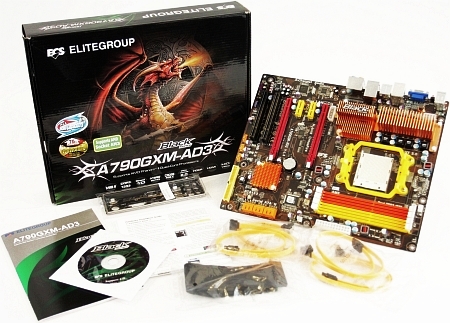
Features:
AMD 790GX/SB750
4-phase VRM
Realtek ALC888C
Realtek RTL8111C PCIe Gb LAN controller
JMB361 eSATA II controller
ITE IT8726F-S super I/O controller
ICS9LPRS471CKL clock generator
passive cooling of chipsets/VRM
8Mb BIOS, version 2.62
Mainboard Revision: 1.0
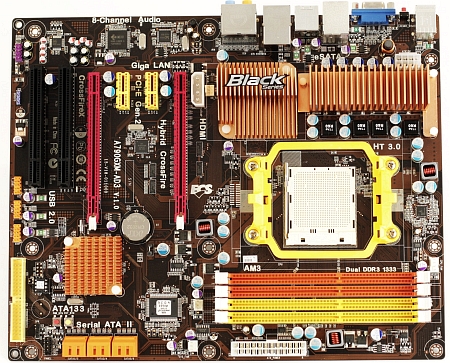
Slots:
2x PCIe 2.0 x16
2x PCIe x1
2x PCI
Memory:
4x Dual-Channel DDR3-slots for PC2-10667U memory up to 8GB
Storage:
6-Port SATA II featuring RAID 0, 1, 5, 0+1, JBOD
1-Port IDE
1-Port eSATA
Backpanel ports:
1x PS/2 keyboard
1x PS/2 mouse
1x HDMI
1x VGA
1x Gb LAN
6x USB 2.0
7.1 analog output
1x CMOS-reset-button

Accessories:
4x SATA cable (2 angeled 90°)
1x IDE cable
(may change because we got only an engineering sample)
BIOS features:
Bus Speeds: auto, 190MHz to 400MHz in 1MHz increments
Memory Ratios: auto, Limit, 400, 533, 667, 800
HT speeds: Auto, 2.0GHz, 1.8GHz, 1GHz, 800MHz, 600MHz, 400MHz, 200MHz DRAM command rate: n/a
DRAM timing control: Auto, manual
CPU Clock Multiplier: n/a
CPU Voltage: auto, disabled, +20mV to +300mV in 20mV increments
CPU PLL Voltage: n/a
DRAM Voltage: Auto, disabled, +10mV to +630mV in 10mV increments
Northbridge Voltage: Auto, disabled, +5mV to +315mV in 5mV increments
Testbed:
Motherboard:
ECS Elitegroup A790GXM-AD3 (provided by Elitegroup)
AMD 790GX/SB750
CPU:
AMD Phenom II 810 (provided by AMD)
CPU-Cooler:
Scythe Andy Samurai Master (provided by Scythe-Europe)
Memory:
Kingston 3GB Kit (only 2 used) PC3-16000U KHX16000D3T1K3/3GX (provided by Kingston)
CL7-7-7-20 CR2T at 1.55V
Graphics Card:
Jetway Radeon HD3870 (provided by mec-electronics)
Power supply:
Seasonic S12II 500W
Hard disk:
Western Digital WD4000KD (provided by Ditech)
Case fans:
SilenX iXtrema Pro 14dB(A) (provided by PC-Cooling.at)
Scythe DFS122512LS
Case:
Cooler Master Stacker 831 Lite (provided by Cooler Master)
Layout:
The board appears rather unspectacular, despite the fact that it comes from ECS' "high-end" line called Black Series. We would have imagined a black PCB, but all we got is a brown one. This board does not even feature a heatpiped cooling solution, but due to the fact the AMD chipsets are not getting too hot, the massive aluminium heatsinks suffice.
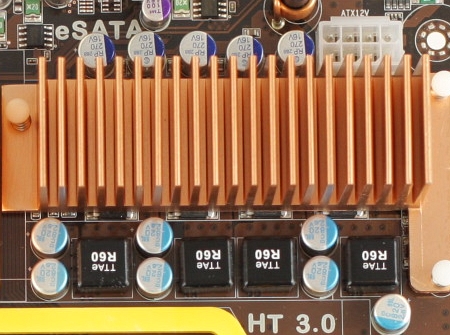
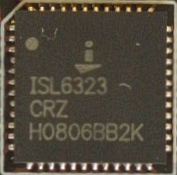
The VRM is an analog 4-phase design driven by an ISL6323. This is a controller made for AMD split-plane CPUs, so you won't find this on any Intel board. ECS claims it can handle CPUs up to 160W, so each phase is able to deliver 30A which is quite impressive. The CPU-power connector is placed behind the massive heatsink which is not an elegant solution .
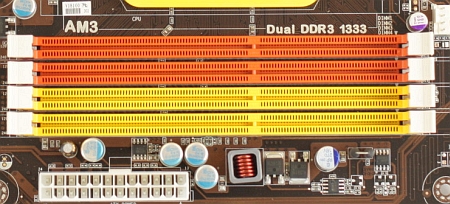
The memory slots are well placed. They are far away from the PCIe x16 slot, so you can change the memory with the graphics cards installed. The ATX power connector is placed beneath, but with plenty of space, so the memory modules won't interfere.

The slots are configured in MSI style. Using two triple-slot Radeon cards in Crossfire-configuration will steal all your slots. Also the HDD power-connector beside the northbridge is not an elegant solution, it should have been placed near the ATX connector A PCIe x1 slot beside the northbridge would have given you a chance to install a sound- or TV-card.
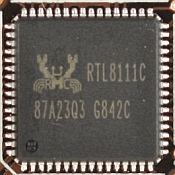
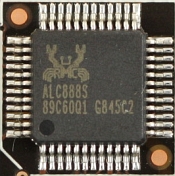
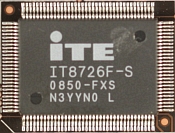
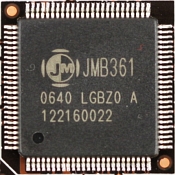
For some reason all vendors go for the cheapest PCIe Gb LAN solution on the market, which is the Realtek RTL8111C. It is not known for very good performance, especially the I/O load is quite weak. A Marvell, Broadcom or Intel chip would have been a better choice, but of course opting for a better chip would also have increased costs. Audio is also provided by a Realtek chip: the ALC888S. The ITE chip is a super I/O controller, for all legacy devices, such as floppy, LPT and COM ports but you won't find any connectors for that, so the controller just mangages fans and sensors. The JMicro JMB361 provides one eSATA port, we feel a second port would have been a good idea.

The SATA connectors are on the edge of the board and angled 90°. This is the best solution available because the connectors won't interfere with any cards.

ECS also features the small power-on and reset buttons which are now quite common. Beside them you find the PATA connector. We only miss a port80 diagnostic LED which would help if the board for some reason can't boot up properly.
BIOS:
ECS is using a AMI 1MB BIOS. The BIOS is still very beta, some OC settings we were expecting are still missing, some memory settings made manually result in wrong entries. At least normal operation was stable and we got around of most of the bugs.
Overclocking:
While our DDR2 board reached 261MHz, this board won't go over 250MHz. So we are stuck with 3.25GHz on our Phenom II 810, which is ok.
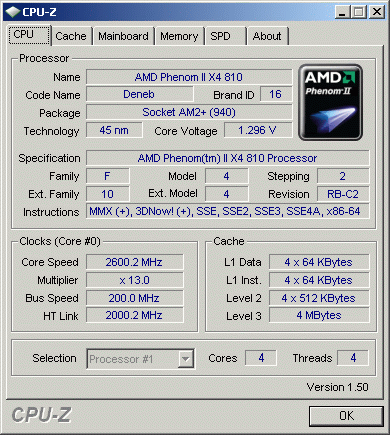
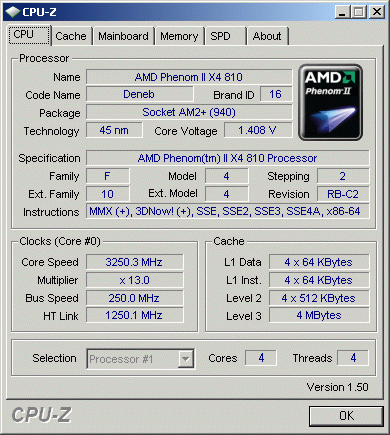
Memory:
By default the board detects only 1067MHz memory, even when memory can do much more and has a correct SPD. Setting to 667MHz which results in 1333MHz worked without problems. But we decided to reduce the latencies, because we know our memory can do much more.
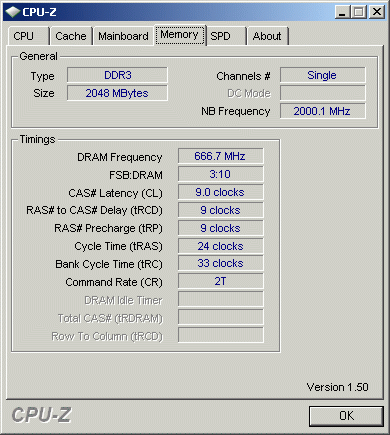
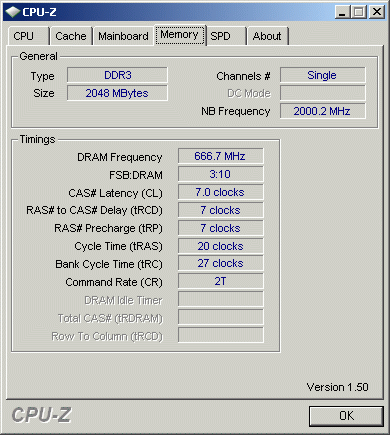
Benchmarks:
Please note that different bios revisions may give different results. As usual with our AMD benches we skipped x264, because it can not match any Intel CPU. Our benchmarks are quite self-explanatory. Apart from the usual benchmarks, we included a Far Cry 2 benchmark, which should show the benefit of a faster CPU and/or faster memory.
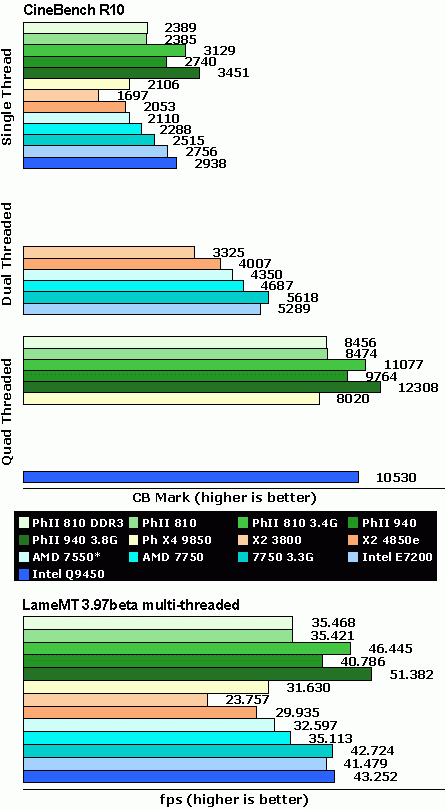
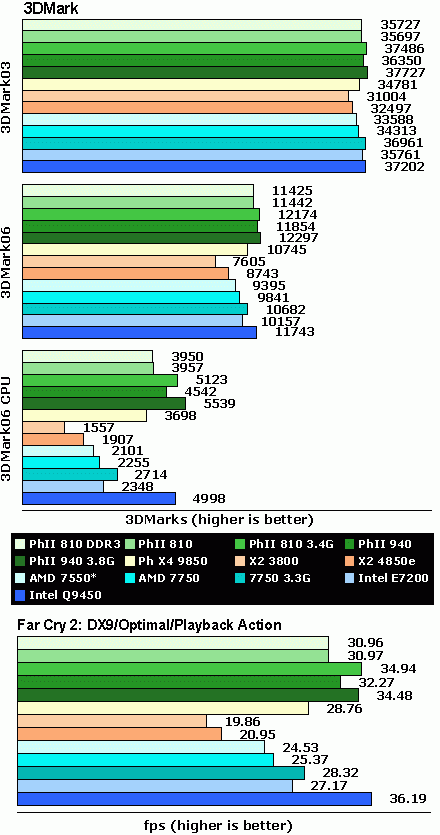
DDR3 comparison:
Checking the graphs above, we see DDR2 800MHz CL4 brings the same results compared to DDR1333 CL9 which is disappointing. We have decided to test if other memory speeds will do any good. We have skipped Cinebench and 3DMarks because they deliver almost identical results.
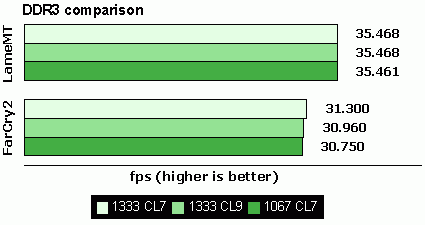
As you can see LameMT doesn't care about memory speed. At least FarCry2 does, but the gap is small. Between the slowest and fastest settings the difference is only about a half frame which are less then 2%.
Power-Consumption
The board does fine, but can't match the good idle results MSI DKA790GX provided. Under load the two boards are not far off. Compared to an Intel Core 2 Quad the Phenom II is very power-hungry.
Please note that other configurations may yield different results.
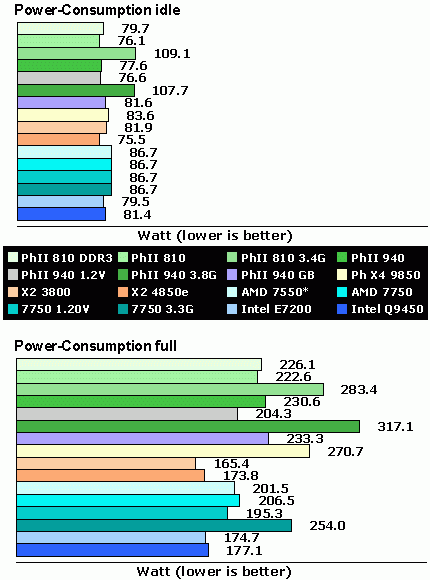
Conclusion
ECS did a fine job. As long as you consider this board as gaming platform it works well. This board should arrive with a €100,- price-tag after CeBIT, that's why the features are quite limited.
With memory prices so low we don't understand why ECS did not opt for sideband-memory. If they think, users will buy a graphics-card anyway, then a 790FX chipset would have done the job too. Also they saved some money on the components. While ECS told us the retail box will feature all solid capacitors, it will not feature all solid chokes. Hopefully they will add an HDMI to DVI adapter, because VGA isn't contemporary.
The results with DDR3 are disappointing. You need DDR3 1333MHz memory to match DDR2 800MHz memory. While DDR3 did get cheaper, it's still much more expensive than DDR2. Maybe AMD and the BIOS vendors can enhance the performance, but we could also not see that this platform is more overclocking friendly, because the AMD overdrive tool did not work. It would be a nice idea to upgrade that tool before new boards hit the market.
If you already have a DDR2 solution, there is really no reason to upgrade. In case you are considering buying a new system now, it's not an bad idea to opt for an AM3 CPU to be future-proof, but for the time being you can choose one of the many DDR2 boards which also will save you a few bucks.


